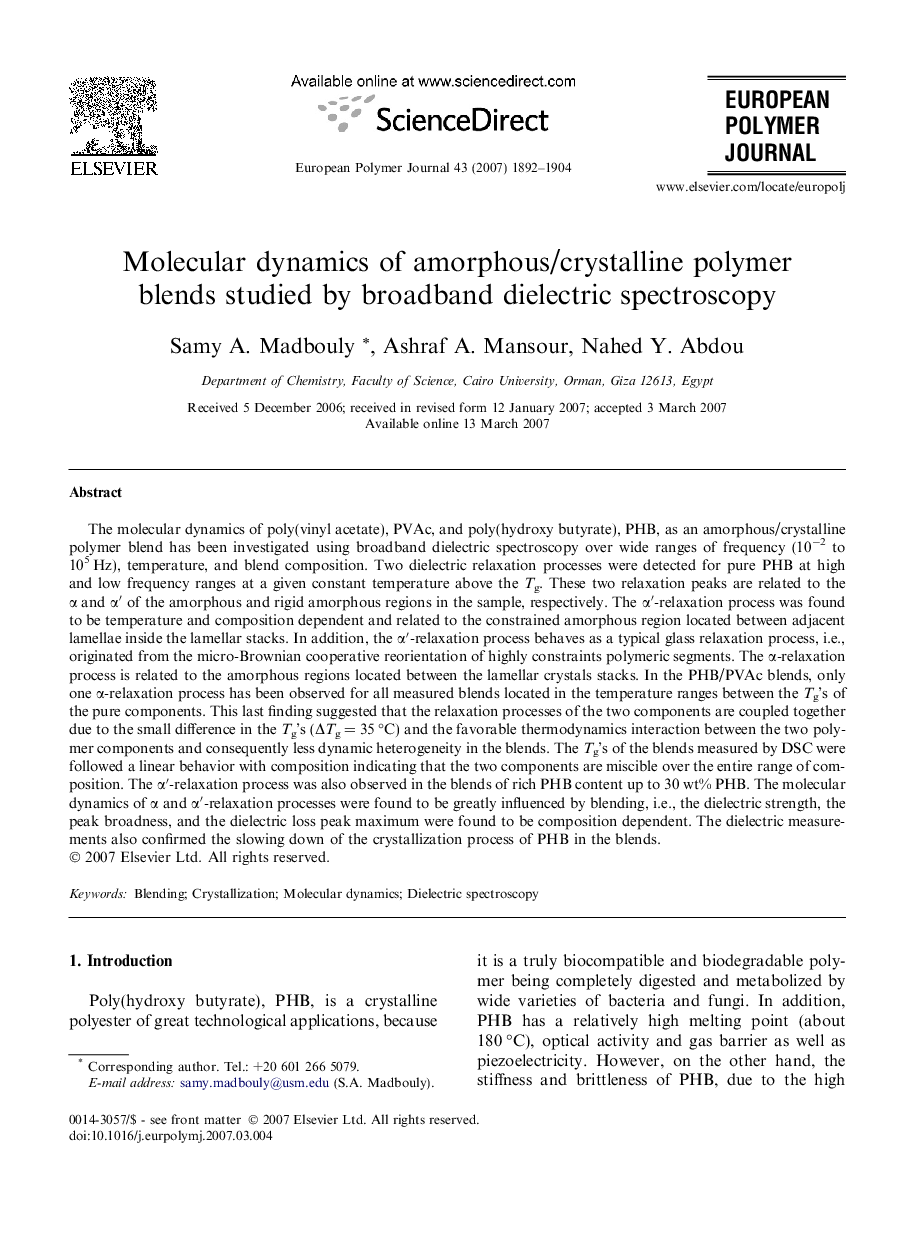| Article ID | Journal | Published Year | Pages | File Type |
|---|---|---|---|---|
| 1403590 | European Polymer Journal | 2007 | 13 Pages |
Abstract
The molecular dynamics of poly(vinyl acetate), PVAc, and poly(hydroxy butyrate), PHB, as an amorphous/crystalline polymer blend has been investigated using broadband dielectric spectroscopy over wide ranges of frequency (10â2 to 105 Hz), temperature, and blend composition. Two dielectric relaxation processes were detected for pure PHB at high and low frequency ranges at a given constant temperature above the Tg. These two relaxation peaks are related to the α and αⲠof the amorphous and rigid amorphous regions in the sample, respectively. The αâ²-relaxation process was found to be temperature and composition dependent and related to the constrained amorphous region located between adjacent lamellae inside the lamellar stacks. In addition, the αâ²-relaxation process behaves as a typical glass relaxation process, i.e., originated from the micro-Brownian cooperative reorientation of highly constraints polymeric segments. The α-relaxation process is related to the amorphous regions located between the lamellar crystals stacks. In the PHB/PVAc blends, only one α-relaxation process has been observed for all measured blends located in the temperature ranges between the Tg's of the pure components. This last finding suggested that the relaxation processes of the two components are coupled together due to the small difference in the Tg's (ÎTg = 35 °C) and the favorable thermodynamics interaction between the two polymer components and consequently less dynamic heterogeneity in the blends. The Tg's of the blends measured by DSC were followed a linear behavior with composition indicating that the two components are miscible over the entire range of composition. The αâ²-relaxation process was also observed in the blends of rich PHB content up to 30 wt% PHB. The molecular dynamics of α and αâ²-relaxation processes were found to be greatly influenced by blending, i.e., the dielectric strength, the peak broadness, and the dielectric loss peak maximum were found to be composition dependent. The dielectric measurements also confirmed the slowing down of the crystallization process of PHB in the blends.
Related Topics
Physical Sciences and Engineering
Chemistry
Organic Chemistry
Authors
Samy A. Madbouly, Ashraf A. Mansour, Nahed Y. Abdou,
